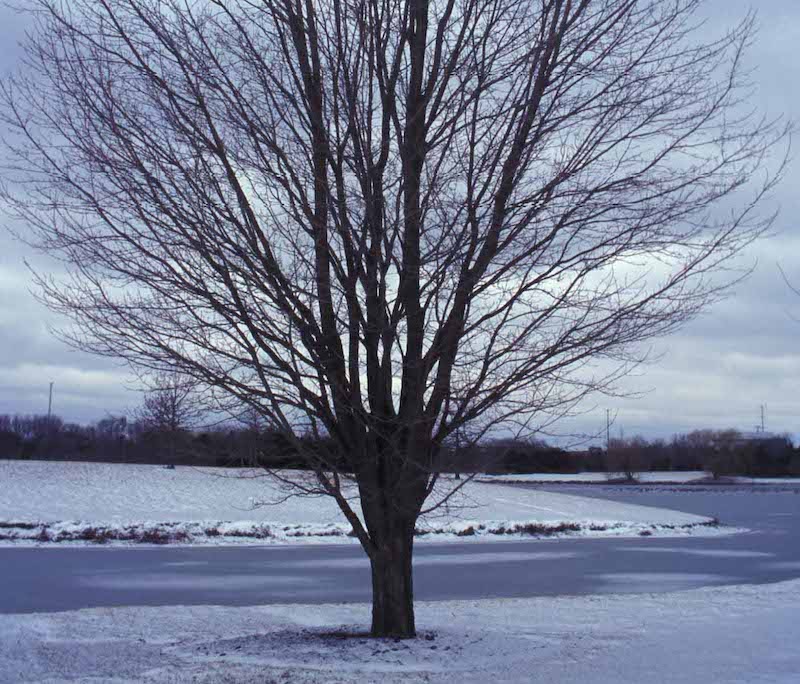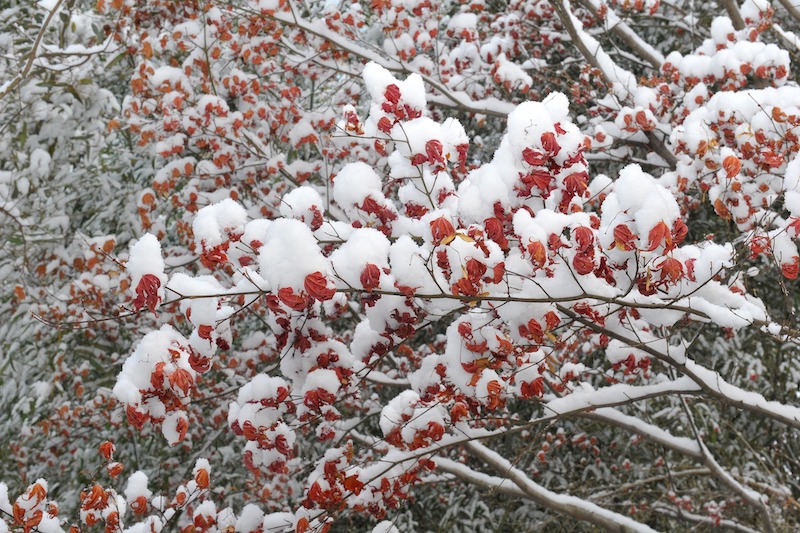Maples usually do not require much fuss during the winter unless they are young or potted. Popular species include Japanese maple (Zones 5-8), red maple (Zones 3-9), silver maple (Zones 3-9), and sugar maple (Zones 4-8). Once established, a few maple species can tolerate temperatures reaching -30 degrees Fahrenheit. While mature maples do generally not need to be overwintered, a young or potted maple may need to be brought inside an unheated garage or shed or protected from ice and snow by being wrapped in burlap.

Protecting Maple in Winter
Typically, mature maples do not suffer from cold winters. However, young and potted maples may struggle. Wrap young maples planted outside with burlap or cover them with tarps during heavy periods of snow. To wrap with burlap, plant three to four wooden or metal stakes around the tree and then wrap the burlap around the frame of the stakes. You can also apply a mulch ring to outdoor maples to better insulate their roots and limit moisture loss. If your tree is potted, move it into an unheated garage, barn, or shed to protect it from the cold and elements. Mature sugar maples, however, do better with snow; the snow insulates their shallow roots. Do not fertilize maples during the winter.
Cutting Back Maple For Winter
Prune maples during late fall or early winter when the trees are dormant, and the branches are bare.
Maple Winter Care in Pots
Depending on your zone, you can move potted maple into an unheated garage, shed, or barn. If one is unavailable, you can bury the pot and use the surrounding soil as insulation, or move the maple tree to a south-facing or west-facing location near a wall. Ensure you don’t place it underneath an overhang or gutter where water may drain into the pot. Also, take caution as to what type of pot you are using. Wrap ceramic glazed and terracotta pots with bubble wrap to prevent them from cracking in cold weather. You can then add a layer of mulch to the soil’s surface and wrap the tree with burlap.

Watering Maple in Winter
Ensure you regularly water maple throughout the summer and into the fall. A regular watering schedule will enable the tree to store water before going dormant for the winter. Maple trees typically do not need a lot of water during the winter; water only occasionally to dampen the soil during extended dry periods.
Growing Maple Indoors
Maple trees, typically dwarf varieties that grow to only 3 to 10 feet, can be grown inside. Many people choose Japanese maples for bonsai. For maples to thrive indoors, replicate their native outdoor conditions as closely as possible. Plant in moist, acidic, well-draining soil. An average potting soil amended with perlite or compost will do fine. Place the pot in indirect light; a room with a south-facing window will work. Water only when the top 1 to 3 inches of soil are dry. Depending on the quality of the soil, fertilize once or twice per year with a slow-release, granular fertilizer.
Steps To Care For Maple in Winter
Maple trees require minimal effort to prepare for winter.
Step 1 - Water maple well throughout the summer and fall.
Step 2 - Prior to overwintering, do not fertilize maple after midsummer.
Step 3 - Apply a 3-to-4-inch mulch ring around maple’s trunk
Step 4 - To protect a young maple from excessive winter cold, wrap it with burlap.
 |
Author Suellen Barnes - Published 4-28-2023 |
